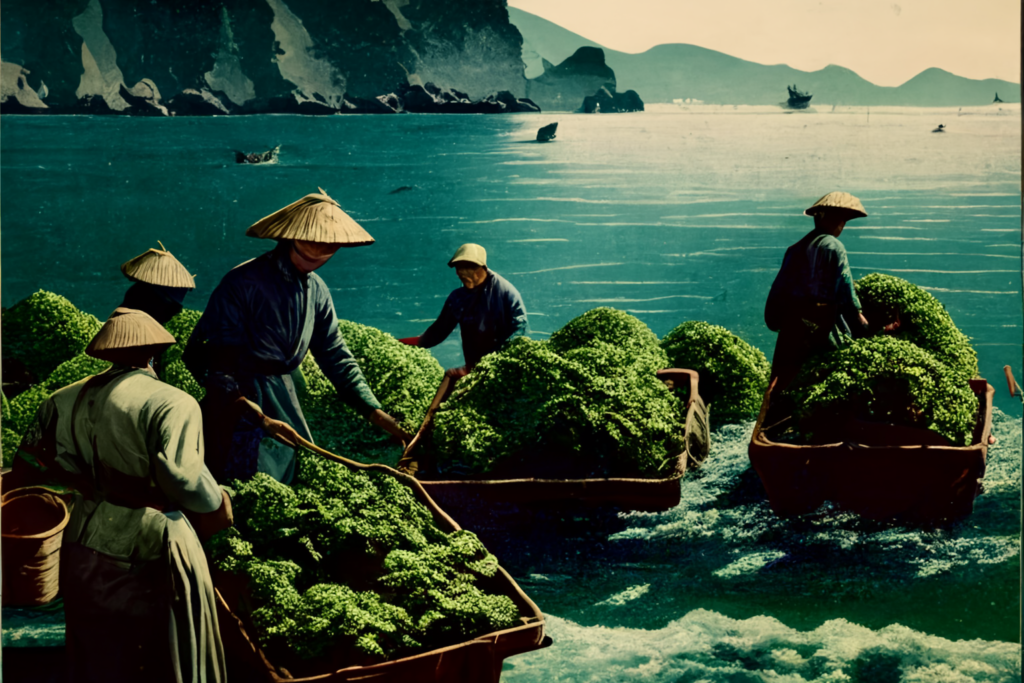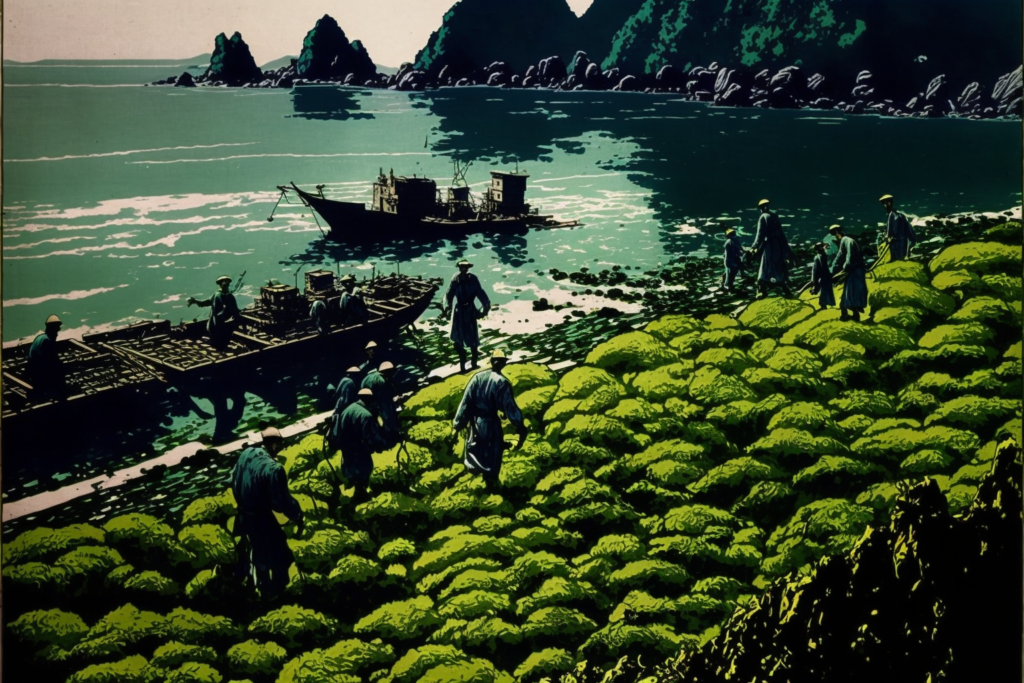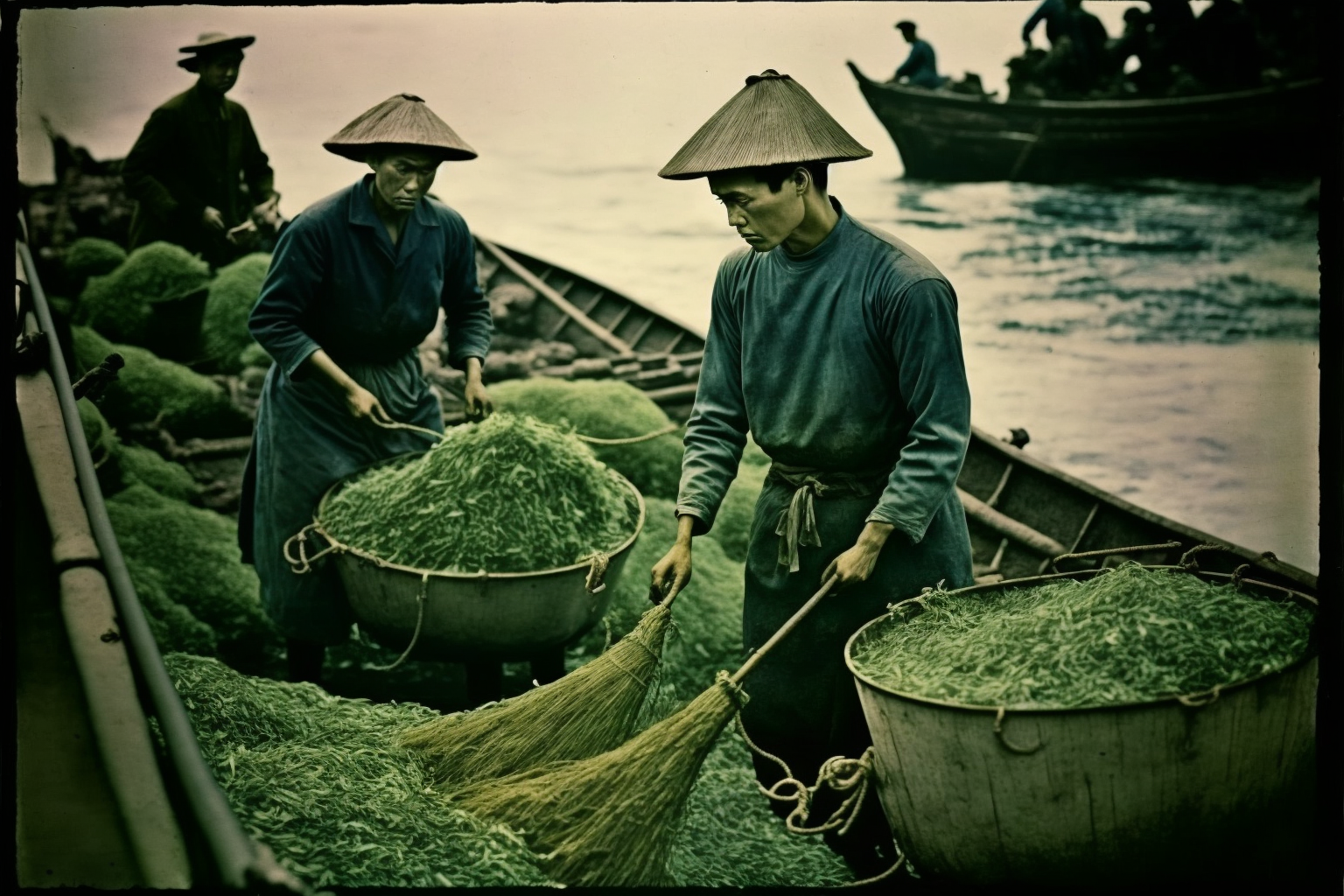Seaweed farming, also known as mariculture, has a long and varied history. The earliest known use of seaweed as a food source dates back to coastal cultures in ancient China and Japan, where it was harvested from the wild and dried for preservation. In the 18th and 19th centuries, Norwegians began cultivating seaweed for fertilizer and animal feed.

During World War II, Japan faced a shortage of arable land and resources, which led to the development of intensive seaweed cultivation methods. By the 1950s, Japan had become the world’s leading producer of seaweed, focusing on the cultivation of nori (Porphyra spp.) for use as a wrapping for sushi.
In the 1960s, scientists in Europe and North America began researching the cultivation of seaweed as a potential food source, bioactive compounds, and biopolymers. In the following decades, seaweed farming operations began to spring up in countries such as Canada, Ireland, and China.
Today, seaweed farming is a rapidly growing industry, with production taking place in countries all around the world. The most commonly cultivated species include kelps (Laminaria spp. and Saccharina spp.), dulse (Palmaria palmata), and nori (Porphyra spp.). These species are grown for various purposes, including as food for humans and animals, as a source of bioactive compounds and biopolymers, and as a tool for bioremediation and coastal management.
One of the key advantages of seaweed farming is that it is a sustainable and low-impact form of aquaculture. Seaweed does not require fresh water or feed inputs, and it can grow in areas where other forms of aquaculture would be impractical. Additionally, seaweed cultivation can help to mitigate the impacts of coastal development and pollution by removing excess nutrients and pollutants from the water.

Despite its many potential benefits, seaweed farming is still a relatively new industry, and many challenges remain to be overcome. These include issues related to genetics, breeding, and genetic modification, as well as the need for effective harvest and processing methods. Additionally, there is a need for more research to be done on the ecological impacts of large-scale seaweed cultivation, as well as on the economic viability of different cultivation systems.
Overall, seaweed farming has come a long way since its early days, and it has the potential to become a major player in the global food and aquaculture industries. With continued research and development, seaweed will likely become an increasingly important source of food, bioactive compounds, and biopolymers, as well as a valuable tool for coastal management and bioremediation.

